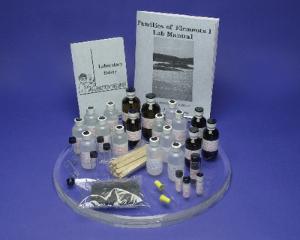Explore the Periodic Table; Plus a Free Student Handout from AccessScience
This free resource helps students learn how the elements make up everything on the earth, in the solar system, and in the universe.
Fill form to unlock content
Error - something went wrong!
Get Your Free Article with Follow-up Questions for Students
You're all set!
EnjoyAccess to this content is available to Ward's World readers for free from McGraw Hill's AccessScience, an award-winning, digital STEM resource containing exclusive articles written by expert scientists and engineers; biographies of well-known scientific figures; science news, videos, and animations; and much, much more.
Instructors can use AccessScience to guide students on their research project journeys, to help students understand scientific concepts, to support distance learning efforts, in flipped classroom approaches, and in countless other ways.
Ward’s World and AccessScience have partnered to offer educators a no-obligation, free trial subscription to AccessScience. Request your free trial today to discover how valuable AccessScience can be for you and your students! Get your free trial now.
Middle & High School
There’s no better way to get a positive reaction out of your science students than learning about the periodic table of the elements. There will be an element of surprise when students learn how these pure substances make up everything on the earth, in the solar system, and in the universe--including in their own bodies!
Scientists have discovered 118 elements so far. The earliest elements humans have known about and used include gold and iron. We've always been intrigued by gold's unique property of not reacting with other elements, ensuring our precious jewelry stays nice and shiny over the years. And where would we be without iron (combined with carbon) to make the steel for our towering skyscrapers and expansive bridges?
With this free resource brought to you exclusively from McGraw Hill’s AccessScience, students can explore the elements that make up their world. This comprehensive article covers groups (aka families), periods, elements, and other properties!
But first, the heavy metal fans in your classroom will react positively to learning the facts below.
What are some of the newest elements on the periodic table?
Elements 113, 115, 117, and 118 are the newest substances added to the periodic table, completing the seventh period (the horizontal rows of the table). The International Union of Pure & Applied Chemistry (IUPAC) officially recognized nihonium (Nh), moscovium (Mc), tennessine (Ts), and oganesson (Og) at the end of 2015.
All four of the newest elements are highly unstable super heavy metals. Heavy elements have an atomic number larger than 92. Super heavy elements (aka transactinides) usually have atomic numbers larger than 112. Super heavy elements are also more radioactive and unstable than other elements.1
Super heavy elements don’t occur in nature. Instead, researchers create these elements in laboratories. Scientists use particle accelerators to make ions (a charged element) of one element crash into the ions of another element. Ions are charged atoms. When the nuclei crash together, they may join together. 1 If the nuclei join, a new element is created. But these artificially created elements only exist for a fraction of a second before they decay into other elements.
Getting started is element-ary. Just Download McGraw Hill’s AccessScience article, Periodic Table, to get the facts about the tabular display of the chemical elements.
The free download also includes assessment questions and answers you can use to test student understanding. Download the teacher key here.
References: 1. Let’s Talk Science: STEM in context the newest elements on the periodic table.
Recommended products:
[StartProductBlock]
Periodic Table of Cookies Demonstration
Students develop a periodic table using a process similar to the one Mendeleev used.
[EndProductBlock]
[StartProductBlock]
Giant Color-Coded Periodic Table
This oversized periodic table clearly displays all elements, including synthetic and radioactive elements.
[EndProductBlock]
[StartProductBlock]

Families of Elements Lab Activity
Students determine the reactivity of the nonmetals in the halogen family and observe the properties of oxygen.
[EndProductBlock]
[StartProductBlock]
Clever Catch® Science Education Balls
Interactive student review game. Balls for elements, physics, rocks, and weather.
[EndProductBlock]
[StartProductBlock]
Ward's Periodic Table Bookmarks
This bookmark is a useful portable aid for students. Full periodic table on front. Atomic weights on back.
[EndProductBlock]
